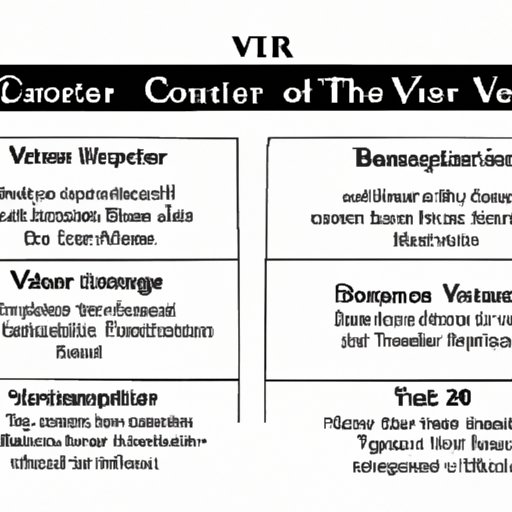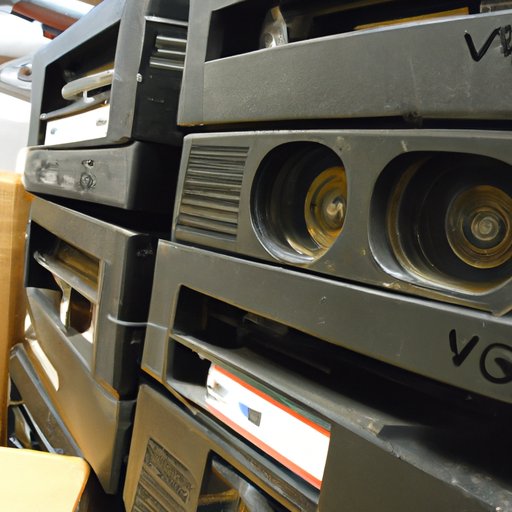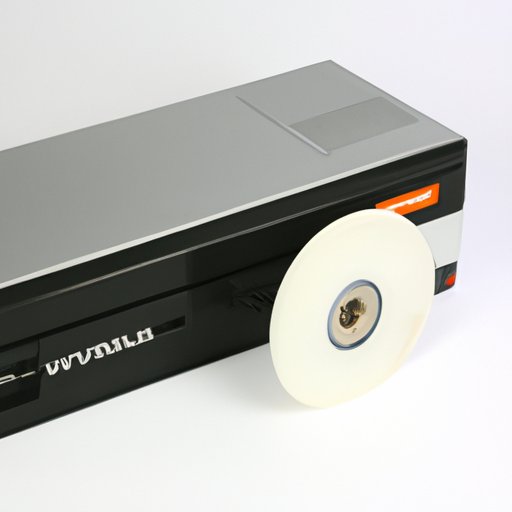Introduction
A Video Cassette Recorder (VCR) is a device that allows users to record, pause, and rewind television programs and movies for later viewing. It was a revolutionary technology when it first appeared in the 1970s and 80s, transforming the way people watched movies and television. But when was the VCR invented? Let’s take a look at the history and impact of this game-changing technology.

A Historical Look at the Inventors and Timeline of VCR Technology
The invention of the VCR is credited to two different inventors, Charles Ginsburg and Ampex Corporation. In 1956, Ginsburg, an employee of Ampex, developed the first practical videotape recorder. The Ampex VRX-1000 was the world’s first commercial videotape recorder, and it made its debut in April 1956 at the National Association of Radio and Television Broadcasters Convention in Chicago.
By the early 1960s, the VCR had been further developed by Ampex and was being used by television studios for recording and editing television shows. However, it wasn’t until 1972 that the first consumer VCR was released. The device, called the Sony U-matic, allowed consumers to record TV shows onto tapes and play them back at their convenience. This marked the beginning of the home video era.
In 1975, the first true consumer VCR, the Sony Betamax, was released. It quickly gained popularity due to its small size and affordability, and it laid the groundwork for the home video revolution. By 1976, other companies such as JVC and Panasonic had released their own versions of the VCR, and the technology began to spread across the world. By the late 1970s, VCRs had become a common household item.
The Impact of VCRs on Home Entertainment and Media Consumption
The introduction of the VCR changed the way people consumed media. For the first time, people were able to record and re-watch television programs whenever they wanted. This allowed people to catch up on shows they had missed or watch their favorite programs multiple times without having to wait for them to air on television. As a result, people became less reliant on broadcast schedules and more in control of their own viewing habits.
The VCR also had a huge impact on the movie rental industry. Before the advent of the VCR, people had to go to local movie theaters or rent films from specialty stores. With the VCR, people could rent movies from video stores or buy them directly from distributors. This gave people greater access to a wider variety of films and helped to create a booming home video market.
Exploring the Benefits of VCRs in the 1980s
The 1980s saw the continued growth of the home video market, with more and more people buying and renting VCRs for their homes. This period saw a number of innovations in VCR technology that enhanced the viewing experience. One of these innovations was the development of the VHS-C cassette, which allowed people to record and play back full-length movies on smaller, more portable cassettes.
Another innovation was the introduction of the remote control, which allowed users to easily control the playback of their VCRs from the comfort of their couches. This increased convenience made VCRs even more popular, and by the end of the decade, they were ubiquitous in households across the world.
Examining the Development and Evolution of the VCR
As the VCR became more popular, technological advancements continued to be made. In the 1990s, VCRs were equipped with features such as advanced programming capabilities and parental controls. These features allowed users to program their VCRs to record television shows automatically and set restrictions on what content their children could view.
By the turn of the century, digital video recorders (DVRs) had begun to replace VCRs as the primary method of recording and watching television. DVRs offered superior picture quality and more advanced features, making them more attractive to consumers than VCRs. As a result, VCR sales declined, and the technology eventually became obsolete.

How VCRs Changed the Way We View Movies and Television
Although VCRs have been replaced by digital technologies, their impact on the home entertainment industry cannot be overstated. Before the invention of the VCR, people had limited access to movies and television shows. Now, thanks to the VCR, people have unprecedented access to a vast library of movies and television programs.
The VCR also helped to usher in the home theater experience. Now, people can watch movies and television shows in the comfort of their own homes, with high-definition displays and surround sound audio systems. All of these elements combined to create a completely immersive viewing experience that would not have been possible without the invention of the VCR.

Revisiting the History of the VCR: From Invention to Obsolescence
For decades, the VCR was a fixture in households around the world. But why did it eventually become obsolete? The main reason is that digital technologies, such as DVRs, offer superior picture quality, more advanced features, and greater convenience than VCRs. As a result, people began to abandon VCRs in favor of newer, more advanced technologies.
Despite its obsolescence, the VCR has left a lasting legacy on home entertainment. It transformed the way people watch movies and television, giving them greater access to a wide variety of content and allowing them to create their own personal home theaters. Its impact on the industry continues to be felt today.
Conclusion
The VCR was a revolutionary technology when it was first introduced in the 1970s and 80s. It changed the way people watched movies and television, allowing them to record and re-watch programs at their own convenience. While the VCR is now obsolete, its legacy on the home entertainment industry lives on.
(Note: Is this article not meeting your expectations? Do you have knowledge or insights to share? Unlock new opportunities and expand your reach by joining our authors team. Click Registration to join us and share your expertise with our readers.)
